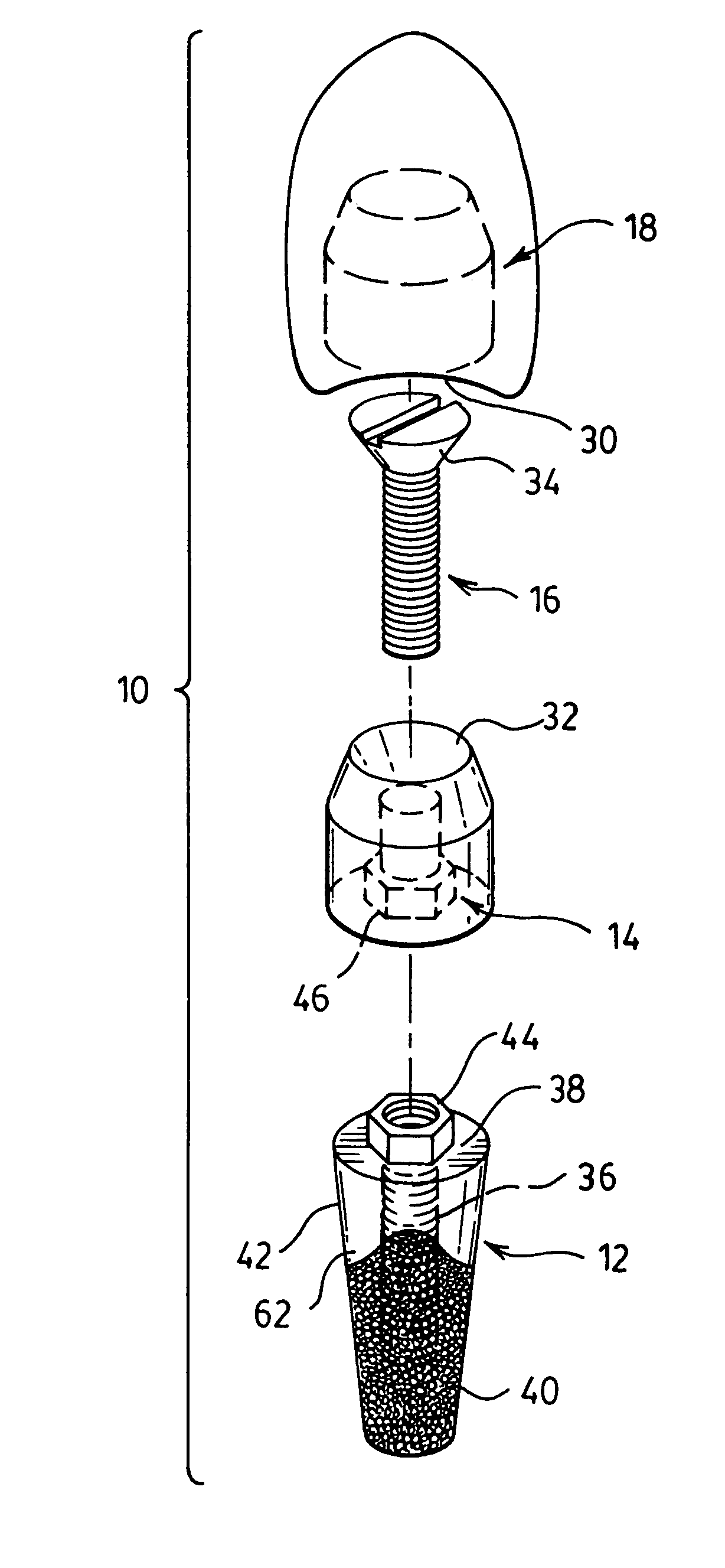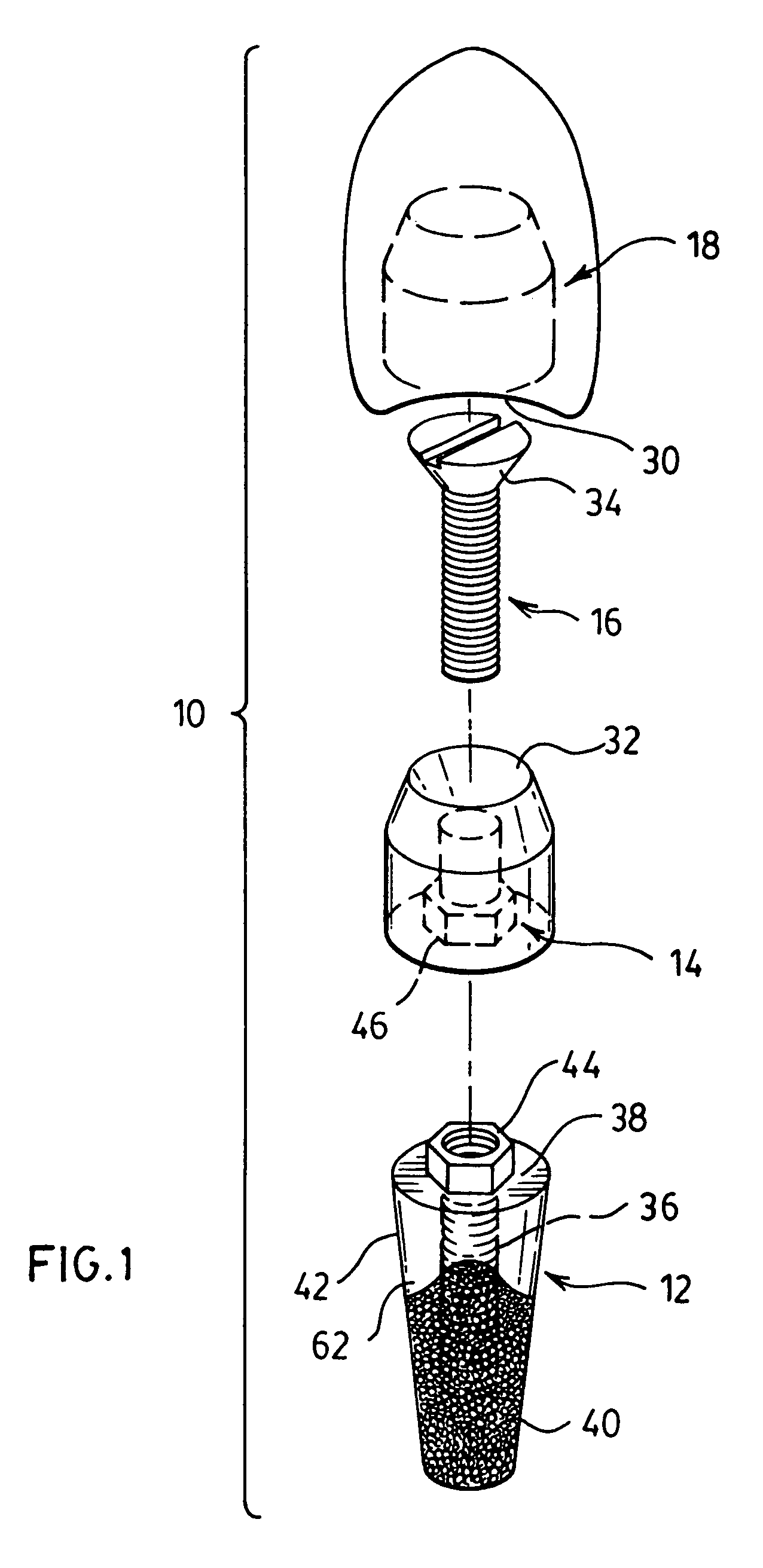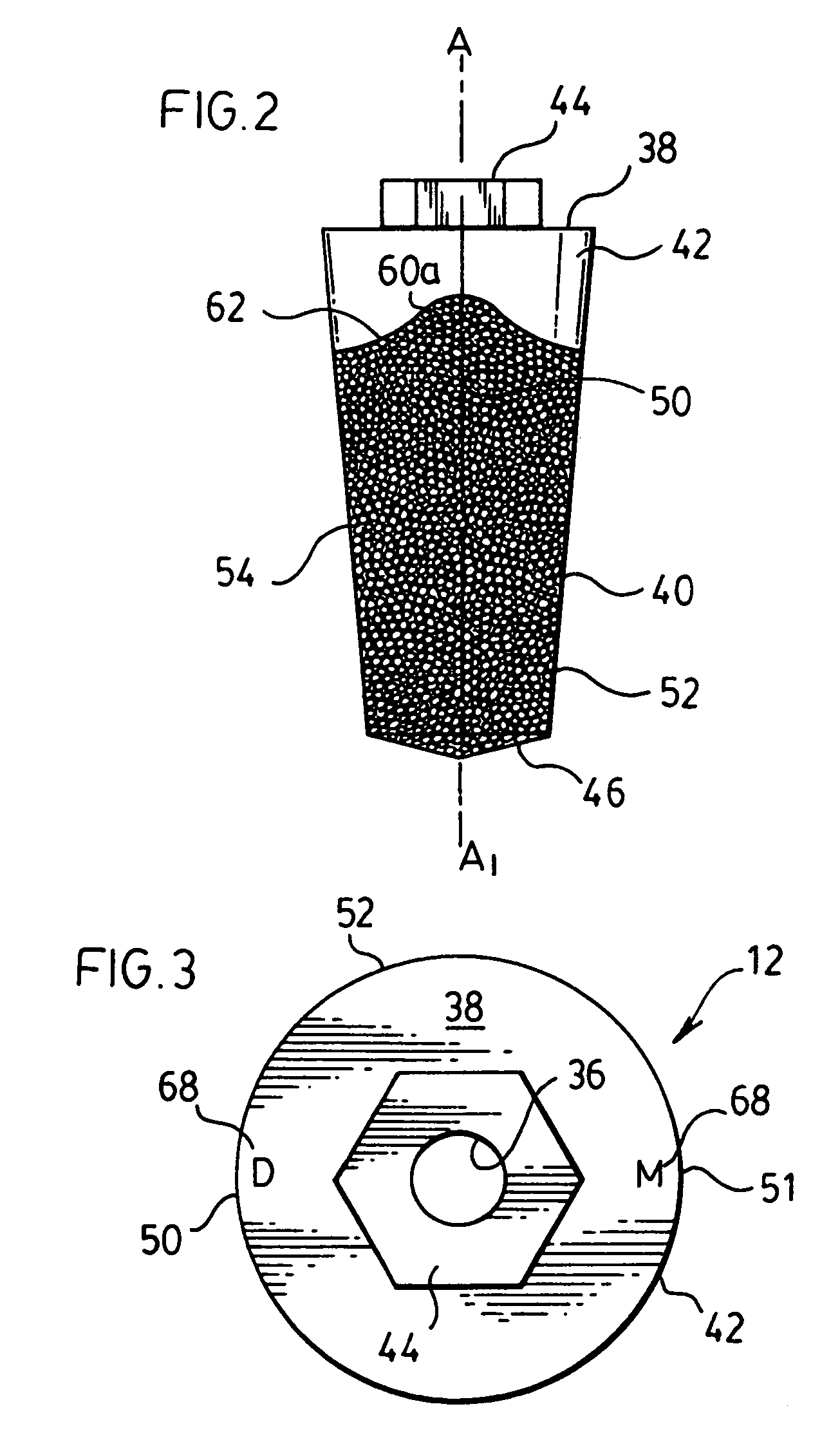Implant for use in aesthetic regions of the mouth with colored contoured edge portion
a technology of contoured edge portion and aesthetic region, which is applied in the field of cosmetic region of the mouth with colored contoured edge portion, can solve the problems of limited success in replacing incisors and teeth, detracting from the natural appearance of the prosthesis, and “disuse atrophy”, so as to promote bone ingrowth
- Summary
- Abstract
- Description
- Claims
- Application Information
AI Technical Summary
Benefits of technology
Problems solved by technology
Method used
Image
Examples
Embodiment Construction
[0046]FIG. 1 illustrates an exploded implant construction 10 used in the replacement of a lost anterior or maxillary tooth, in accordance with a first preferred embodiment of the invention. The implant construction 10 consists of an implantable titanium or stainless steel body 12, a stainless steel abutment assembly 14, a stainless steel retaining screw 16, and a ceramic tooth prosthesis 18 which has a profile and size selected to mimic the patient's natural tooth which is to be replaced. As will be described, the implant construction 10 is adapted to be recessed at the site of a missing anterior or maxillary tooth within the lamellated and alveolar bone tissues 20,22 of the patient's jaw 24 (FIG. 4) in the place of the lost natural tooth.
[0047]The abutment assembly 14 serves as the base support for the prosthesis 18 and has an exterior shape selected for fitted engagement within a complementary sized recess 30 formed in the bottom of the prosthesis 18. A central bore 32 is formed t...
PUM
| Property | Measurement | Unit |
|---|---|---|
| distance | aaaaa | aaaaa |
| distance | aaaaa | aaaaa |
| angle | aaaaa | aaaaa |
Abstract
Description
Claims
Application Information
 Login to View More
Login to View More - R&D
- Intellectual Property
- Life Sciences
- Materials
- Tech Scout
- Unparalleled Data Quality
- Higher Quality Content
- 60% Fewer Hallucinations
Browse by: Latest US Patents, China's latest patents, Technical Efficacy Thesaurus, Application Domain, Technology Topic, Popular Technical Reports.
© 2025 PatSnap. All rights reserved.Legal|Privacy policy|Modern Slavery Act Transparency Statement|Sitemap|About US| Contact US: help@patsnap.com



